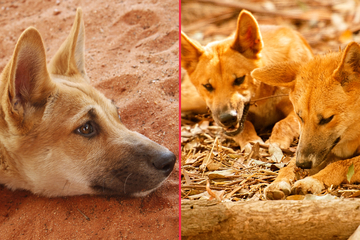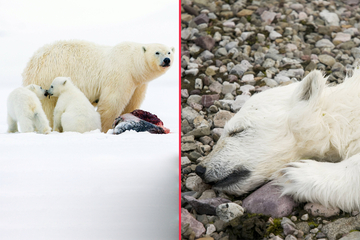What is the Asian giant hornet? Size, sting, origins, and habitat
Few insects bring more fear, and legitimate danger, than what many call the "murder hornet". They are the biggest wasp-like creatures in the world, and perhaps deserve every bit of hate they get. But what is the Asian giant hornet?

There's a reason why many people refer to the Asian giant hornet as the "murder hornet", as they're dangerous, huge, and absolutely vile.
Even a shark brings at least a sense of awe along with the fear when you see one in the wild. But these huge insects mostly only bring dread and disgust.
Are they as dangerous as they seem, though?
It's time to look at the natural facts that surround the ridiculous animal that is the Asian giant hornet. What are Asian giant hornets, how big are they, how should you deal with them, and where do they come from? Let's find out.
Asian giant hornet facts
The Asian giant hornet is an intense predator, with a giant stinger filled with venom that'll take down most of its intended prey with a single thrust. They are remarkable animals, somewhat resembling your standard European Wasp or yellowjacket, except far, far bigger. A good comparison would be that the Asian giant hornet is like a regular hornet or wasp, but in an iron man suit.
There's a pretty major problem with this analogy, though: Asian giant hornets are far more evil than Tony Stark (which is saying something, as the dude's a legitimate arms dealer). In the US, where they have become known as an invasive species in need of eradication, since they have decimated bee populations.
Here are the funnest of all facts about the Asian giant hornet:
- During the winter, Asian giant hornet queens generally hibernate underground in damp environments.
- When the queen is about to leave for hibernation, the males will wait outside the nest for her to come out. This is when the fun begins, as the males clamber onto the female trying to mate with her before she flies away.
- Asian giant hornet nests do not house as many workers as your average wasp or bee hive, instead only around 40 are raised. They won't leave the nest until around July, making their active season quite short.
- The sting of an Asian giant hornet is about a quarter-inch long.
- The Asian giant hornet is the biggest hornet species in the entire world.
- When an Asian giant hornet larvae is ready to pupate it will spin itself a silk cocoon, much like a caterpillar.
Once the scout touches down on the hive, the bees swarm, all of them completely covering the hornet and weighing it down so that it cannot move or defend itself. They will then start to vibrate violently, raising the temperature to around 115-120°F. The combination of this heat cooking the hornet, as well as the suffocation that such a swarm induces, will kill the wasp before it can call for backup.
While the Asian giant hornet seems like a freak of nature, and a vindictive and nasty creature, you've got to admit it's interesting. We could go on for hours with more fun facts!
How big is an Asian giant hornet?
Asian giant hornet queens have torsos that can stretch to around two inches in length, while workers generally sit at around one and a half inches. They are widely considered the biggest hornet species in the world, making them bigger than any wasp or bee species as well.
While they're not the biggest flying insects in the world, they're close enough to have been a contender. This is largely due to their wingspan, which often sits at around three inches. All-in-all, this equates to a creature not so dissimilar to the width of your hand. If that's not frightening, we don't know what is!
Asian giant hornet habitat
As their name suggests, the Asian giant hornet is native to most of Asia, in around 14 different countries. They have also been spotted over the last few years in North America. This discovery resulted in local authorities panicking somewhat, as the Asian giant hornet's spread could have spelled ecological disaster. Luckily, most known infestations have now been eradicated.
Across Asia, you can find the Asian giant hornet living in the following countries:
- South Korea
- North Korea
- Russia
- China
- Taiwan
- Sri Lanka
- India
- Japan
- Nepal
- Vietnam
- Thailand
- Cambodia
- Laos
- Myanmar
These formidable wasps generally nest in the foothills of mountains or in forests. While they sometimes build their nests in trees, Asian giant hornets more often build their hives underground, creating huge subterranean structures that can be very difficult to detect.
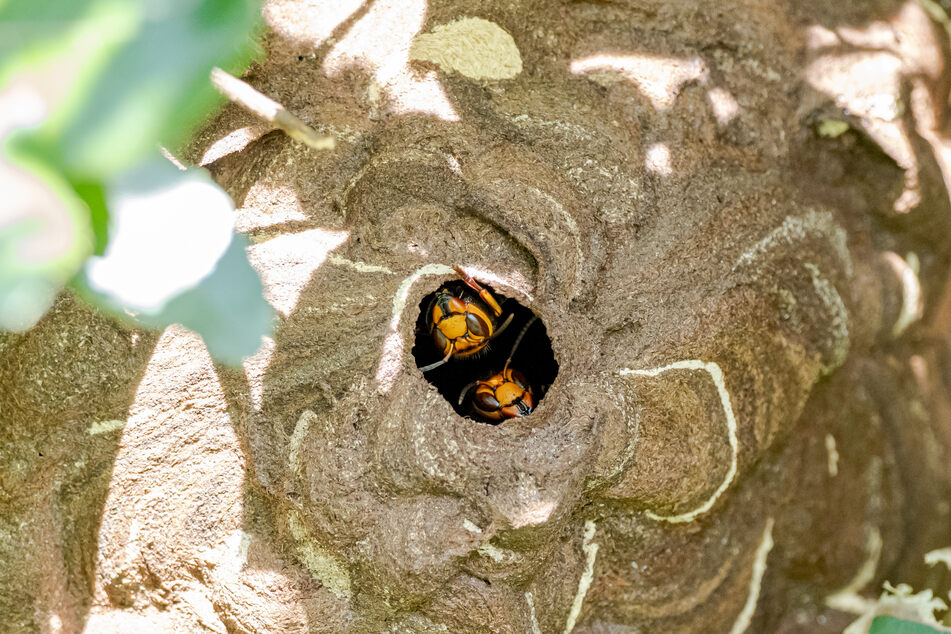
How to kill and get rid of the Asian giant hornet
Due to the danger that Asian giant hornets pose to human health, the only course of action we suggest if you see an Asian giant hornet is to get in touch with the authorities. They will send out a team which will then deal with the hornets safely and efficiently, making sure that all are killed, and the infestation is quashed.
The problem with Asian giant hornets is that they have very potent and powerful venom, and can sting many times over. While a single hornet is unlikely to kill you unless you have anaphylaxis, Asian giant hornets release pheromones when they attack something. These hormones then attract other hornets which come prepared for battle.
Once you call the authorities, they will do one of the followings things to get rid of the Asian giant hornets:
- Trapping the hornets at the entrance of their hive
- Poisoning using a tainted sugar solution or a bee that has been poisoned and left as a bait
- Bait traps and protective screens
- Complete nest removal (usually after killing the queen and as much of the colony as possible)
- Physical attacks against individual hornets (slapping them with a stick)
Asian giant hornets are very dangerous animals, especially in groups. As a result you should never attempt to deal with them yourself - get a professional and do it properly.
What happens if you're stung by a Asian giant hornet?
The venom of an Asian giant hornet contains a variety of nasty chemicals and neurotoxins that can be lethal in high doses. Your average giant hornet won't have enough to bring down a human, but if you are swarmed by multiple Asian giant hornets, you have found yourself in an extremely dangerous situation.
If stung by a single hornet and not experiencing any symptoms other than a bout of soreness and itchiness around the wound, follow our guide to treating wasp stings. In the case that you have been stung multiple times, or are feeling symptoms like difficulty breathing or chest pain, go to the emergency room immediately.
Anyone that is prone to anaphylaxis should immediately go to the hospital and should make sure that they have an EpiPen nearby if the symptoms start to get dangerous.
Does the Asian giant hornet have a natural predator?
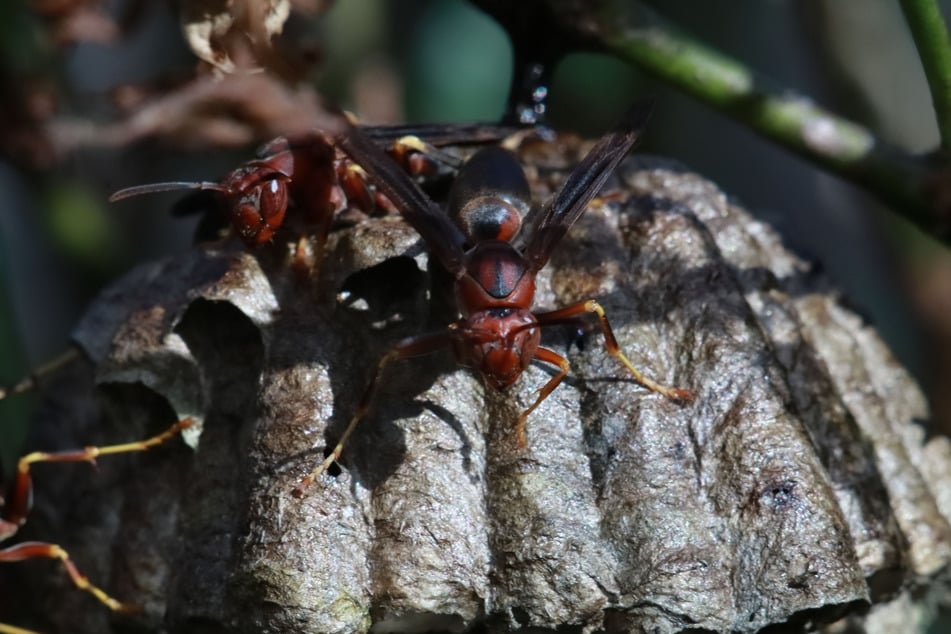
There are no definitive natural predators of the Asian giant hornet. This is one reason why they are so dangerous and so worrisome in the United States. Across Asia, the ecological system has evolved to deal with these monsters, but in North America, this isn't the case.
Interestingly, there are a few insects or other animals that have been known to kill and eat the Asian giant hornet. They are not official, though, as most of these accounts are entirely anecdotal and not based on much real evidence.
Rumors suggest that praying mantises are capable of not only fending off Asian giant hornet attacks, but actively killing and then eating them. It's also been said that there are a variety of birds that do the same thing - which seems a little more plausible. There doesn't seem to be much evidence that either of these things are true, though, so don't take them as gospel.
As far as science and research is concerned, the Asian giant hornet is an apex predator towards those it hunts. It has no natural predators itself and, if left unchecked, will proliferate unimpeded by other animals.
Does the Asian giant hornet have a photographic memory?
The widespread myth that Asian giant hornets have a photographic memory is just that, a myth.
That being said, it has been proven that all hornet species have excellent memories when compared to other insects. That's not to say that they have a photographic or incredibly long-term memory, but they do have the ability to remember.
Many are fearful of "murder hornets" because of the belief that these creatures are vindictive and have photographic memories. This fear is only slightly warranted. Asian giant hornets are extremely aggressive and will attack if prompted, also using the release of pheromones to attract some backup.
These attacks will continue for a while, and you may find that even if you go inside, the wasp will wait for you and attack if you go outdoors again. Over time, this will stop, though. All of this was proven in a 2019 study by Zhiwen Gong, Ken Tan, and James C Nieh, whose paper in the National Library of Medicine was entitled "Hornets possess long-lasting olfactory memories."
Using their quite extraordinary, but not photographic memory, Asian giant hornets are quick learners and will exercise aggressive behavior if you get into a confrontation with them. Again, steer clear and call the professionals.
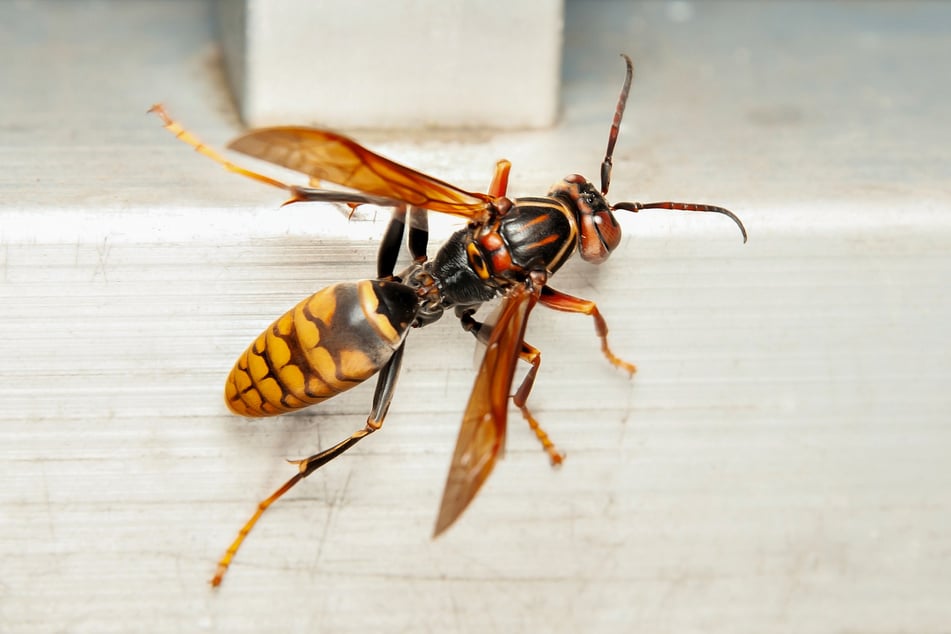
How did the Asian giant hornet get to North America?
The Asian giant hornet was first sighted in North America in 2019 around Vancouver, and also in the state of Washington in the US. They have since been witnessed in Blaine, Washington, areas of British Columbia, and a variety of different areas in both Canada and the US.
In April 2020, authorities began reporting on populations of Asian giant hornets and asked citizens to report any sightings. They initiated what was termed a "full scale hunt" due to the belief that increased infestations could completely devastate bee populations across the continent, as well as cause a variety of other devastating ecological consequences. Thankfully, efforts so far have been largely successful.
It is nearly impossible for us to determine exactly where these Asian giant hornets originally came from. While it seems clear they would have come over by accident, probably on large trade ships bound to the US from Asia, it's simply impossible to point to exactly where and when they arrived.
Asian giant hornets are extremely dangerous
Vindictive and violent, Asian giant hornets are some of the worst creatures on Earth. No one likes a wasp, let alone a hornet, but once you've had to deal with these flying balls of fury, you'll never complain about a small wasp that really wants a taste of your beer. If a colony of Asian giant hornets makes its nest nearby, it's time to get the exterminator in.
Don't feel bad, either. They are ridiculously destructive animals and an invasive species. If you find a nest, getting rid of them is a good thing for the environment. Just don't do it yourself - they are genuinely dangerous and could cause serious harm!
Cover photo: IMAGO/Pond5 Images
